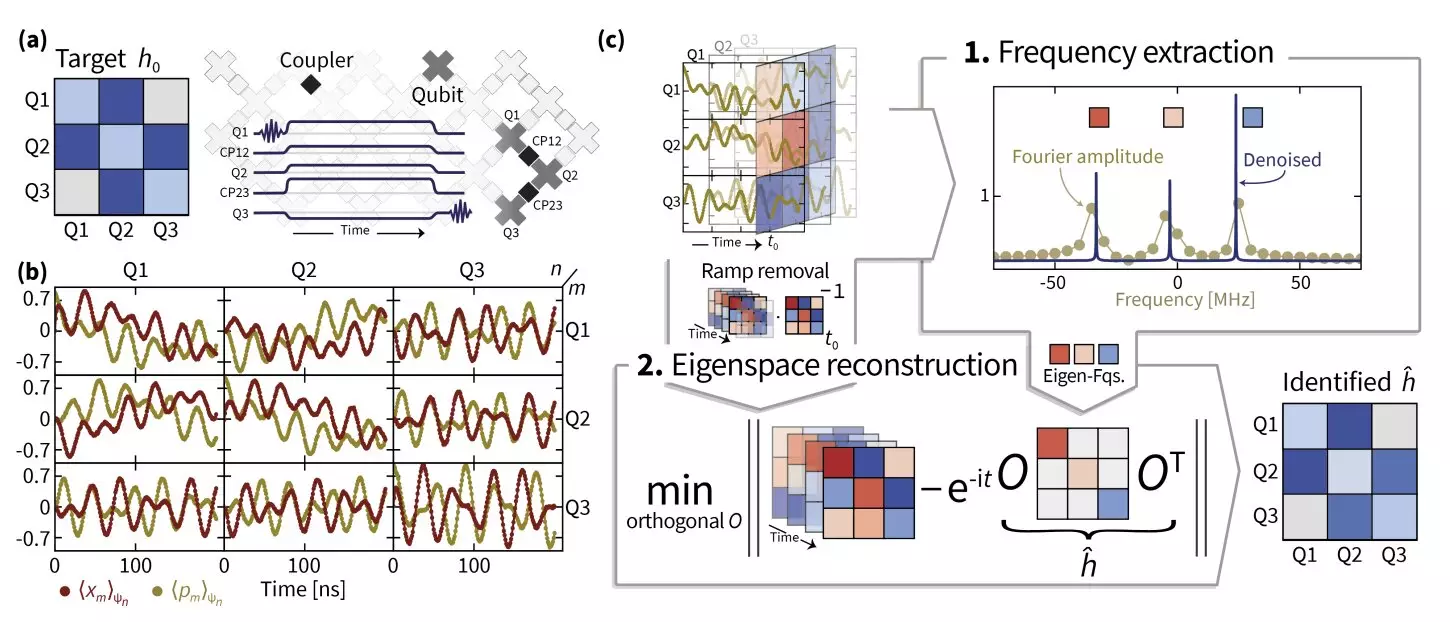The pursuit of advanced quantum simulations has captivated researchers within the realms of physics and quantum computing. Notably, a collaborative effort involving researchers from Freie Universität Berlin, the University of Maryland, NIST, Google AI, and institutions in Abu Dhabi has led to remarkable advancements in estimating the free Hamiltonian parameters associated with bosonic excitations in superconducting quantum simulators. Their findings, detailed in a recent paper on arXiv, promise to facilitate quantum simulations that surpass the capabilities of classical computational models, bringing researchers closer to the realization of highly precise quantum systems.
A pivotal moment in this research journey occurred during a conference in Brazil, when Jens Eisert, the paper’s lead author, received an urgent call from colleagues involved in developing Google’s Sycamore superconducting quantum chip. The team was grappling with severe difficulties in calibrating their chip using Hamiltonian learning techniques. Intrigued and motivated by the complexity of the challenge, Eisert decided to assist his friends, only to discover that the task would require more than just superficial knowledge—it demanded a deep understanding of both analog quantum simulation principles and sophisticated systems identification methodologies.
Upon delving into the problem, Eisert quickly recognized that accurately recovering the frequencies of the Hamiltonian operator from their data was not straightforward. This resulted in a prolonged period of exploration and collaboration, as Eisert enlisted the help of brilliant Ph.D. students Ingo Roth and Dominik Hangleiter. Together, they employed superresolution techniques, but the initial excitement was met with the harsh reality of data retrieval challenges.
The journey toward a solution was not linear; the researchers faced setbacks and extended periods of analysis. As Jonas Fuksa joined their team, the importance of persistence and collaboration became evident. Pedram Roushan, leading the experimental efforts within Google AI, played a crucial role in supplying high-quality data that spurred the research forward. Over the years, back-and-forth discussions and iterative problem-solving led to the birth of innovative techniques that enhanced their ability to learn Hamiltonian dynamics.
The researchers integrated a combination of methodologies, ultimately harnessing superresolution techniques to refine eigenvalue estimations and employing manifold optimization to recover the eigenspaces of the Hamiltonian operator. By adeptly navigating the complexities presented by non-instantaneous processes in the switching of Hamiltonians, they achieved unexpected clarity and precision in their findings. The culmination of this work unveiled TensorEsprit, a groundbreaking method for superresolution that emerged as a cornerstone for their research.
TensorEsprit, the novel technique developed by the researchers, represents a significant advancement in the capability to robustly identify Hamiltonian parameters—an achievement validated across up to 14 coupled superconducting qubits operating within dual Sycamore processors. The implications of this work extend beyond the immediate context of their findings; they provide a framework for future explorations into quantum dynamics, a field that has often remained elusive due to the inherent complexities of Hamiltonian learning.
Reflecting on this progress, Eisert notes the importance of understanding the broader implications of Hamiltonian learning methodologies. Accurate eigenvalue estimations serve as a prerequisite for effective eigenspace recovery—not a trivial task within experimental settings. He emphasized the formidable challenge of translating theoretical concepts into practical applications, illuminating why such research remains scarce in published literature.
The promising results from their initial tests suggest that the methodologies introduced could scale effectively for larger quantum processors. Researchers anticipate applying these techniques to more intricate interacting quantum systems and exploring analogous frameworks where tensor networks influence manipulations of quantum states, particularly in systems involving cold atoms. The curiosity surrounding the characteristics of Hamiltonians urges scientists to further dissect how these operators can be derived from empirical data, which is a crucial step toward enhancing predictive power in quantum mechanics.
Eisert projects increasing significance for this field, noting that rigorous inquiry into the nature of Hamiltonians persists even in foundational quantum mechanics. The study seeks to address an age-old question: how exactly can one learn and understand Hamiltonians from available data? The ability to perform high-precision analog quantum simulations would unlock doors to numerous applications in material science and other domains of quantum research.
In essence, the collaborative effort to address Hamiltonian learning challenges represents a fundamental leap forward in quantum simulation. By refining techniques and enhancing reliability, this research not only enriches the theoretical understanding of Hamiltonians but also paves the path for transformative advancements in quantum technologies. The endeavor to capture and comprehend the complexities of quantum systems is essential in an era where classical capabilities are consistently outmatched, and the horizon for quantum potential continues to expand. Through ongoing innovation and exploration, researchers are steadily illuminating the ambiguous path of quantum mechanics, working toward unlocking new realms of scientific possibility.


Leave a Reply